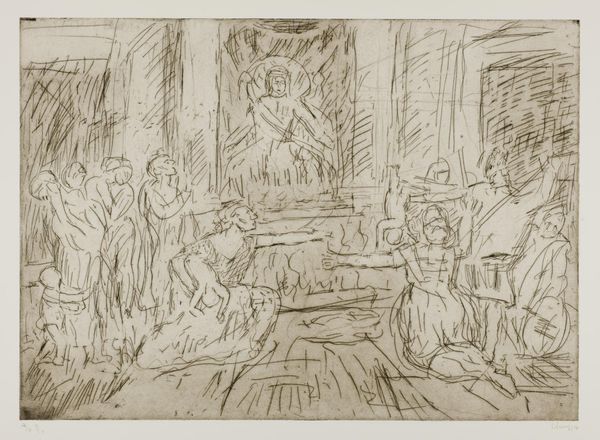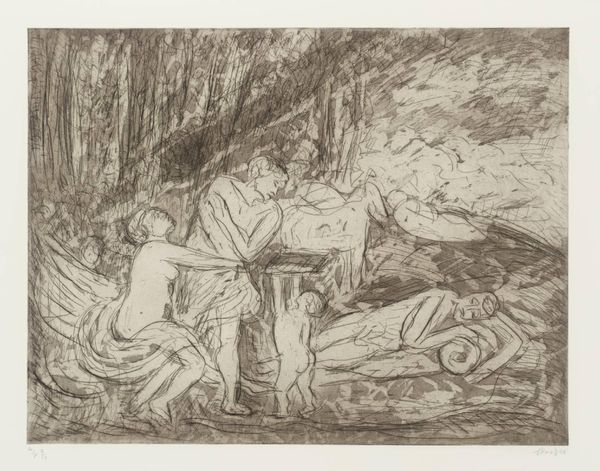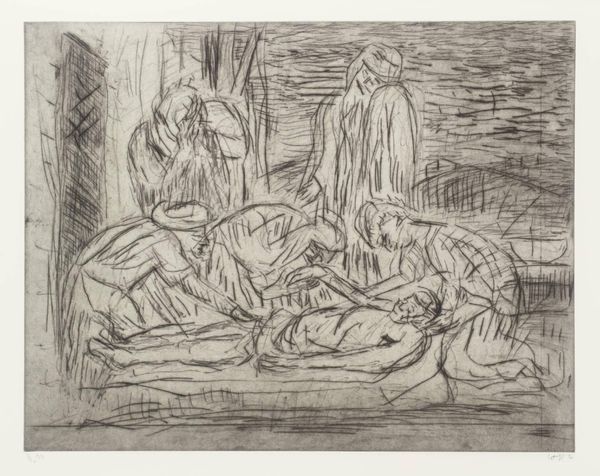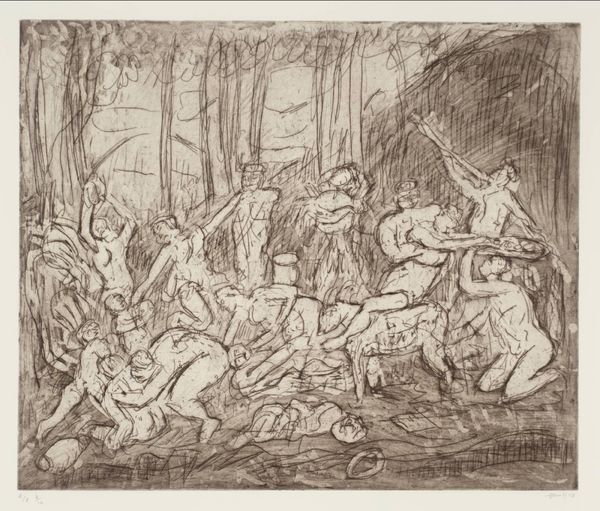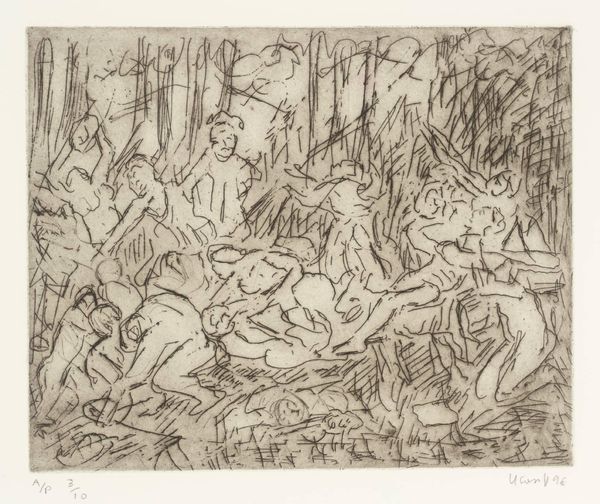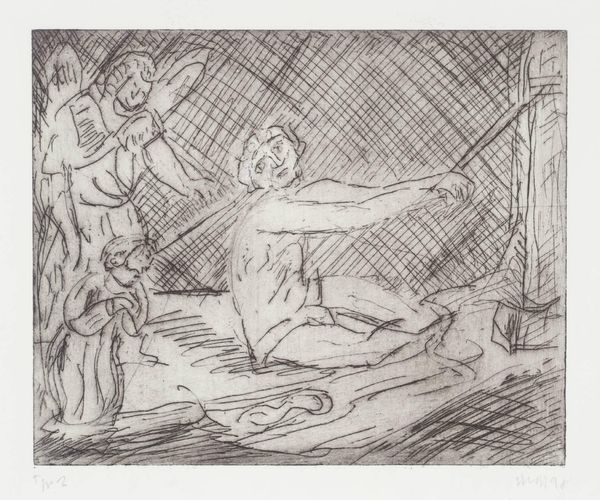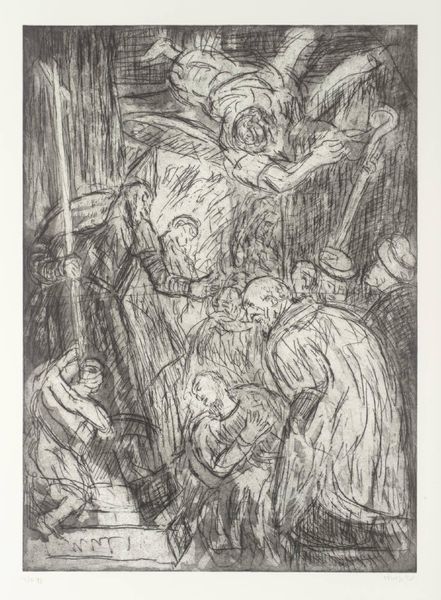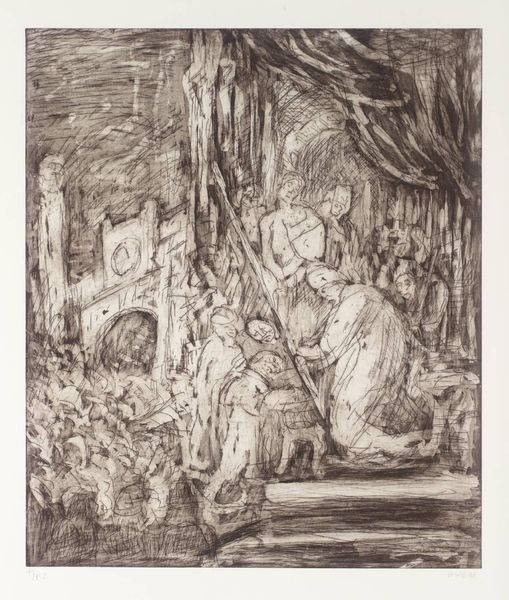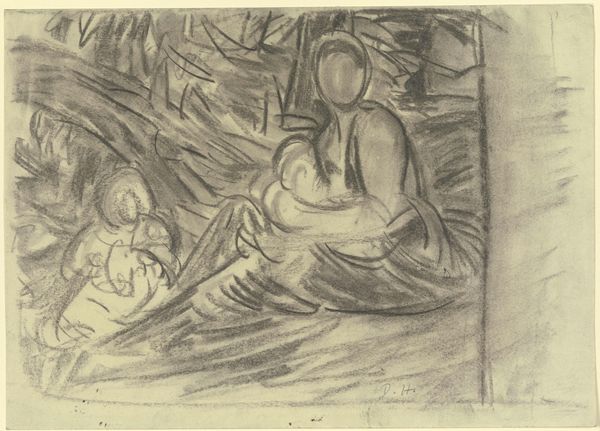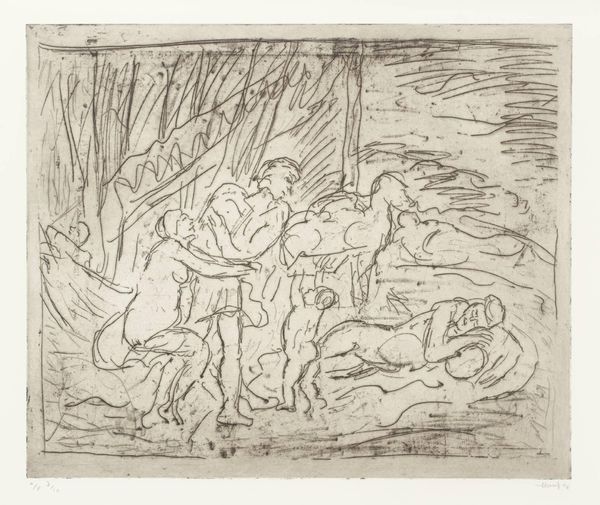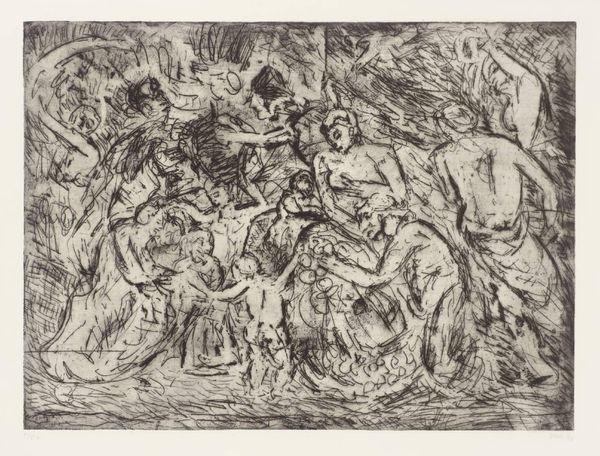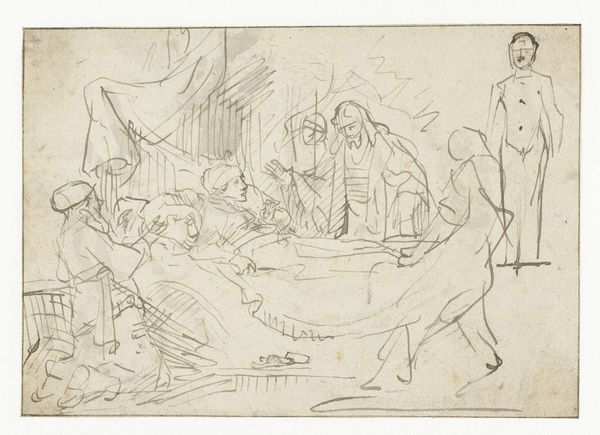
Dimensions: image: 215 x 298 mm
Copyright: © Leon Kossoff | CC-BY-NC-ND 4.0 DEED, Photo: Tate
Curator: This is Leon Kossoff's "Judgement of Solomon (1)," held in the Tate Collection. The dimensions of the image are roughly 215 by 298 mm. Editor: It's stark, almost brutal in its rawness. The hurried lines convey the emotional intensity of the scene, all suspicion and agony. Curator: The Judgement of Solomon is rich with symbolic weight, isn't it? A king, a dilemma, two mothers, and a single child. It speaks of profound moral questioning, right and wrong, what is gained or lost. Editor: Absolutely. I see it as a powerful commentary on the exploitation of women and their bodies, even within supposed justice systems. Whose interests are really being served? Curator: Kossoff's technique—the frenetic, almost chaotic lines—heightens the tension. It pushes past the literal story, exposing the raw emotional core of desperation and maternal agony. Editor: The image is a study in power dynamics, isn't it? Solomon is centralized and enthroned, literally elevated above the women whose fates he controls. Curator: It's a visually and emotionally charged image. Editor: Yes, it encourages us to grapple with uncomfortable truths about justice, power, and gender.
Comments
tate 6 months ago
⋮
http://www.tate.org.uk/art/artworks/kossoff-judgement-of-solomon-1-p11698
Join the conversation
Join millions of artists and users on Artera today and experience the ultimate creative platform.
tate 6 months ago
⋮
This print is one of many etchings executed by Leon Kossoff in response to, and literally in the presence of, oil paintings by old masters; in this case The Judgment of Solomon, 1649 (Musée du Louvre, Paris), by Nicolas Poussin (1594-1665). Tate owns two prints by Kossoff after this Poussin painting (P11698-9). The artist’s ability to explore a number of separate responses while making drawings and prints from a single subject is illustrated in these etchings. This version was published in an edition of twenty with ten artist’s proofs; Tate owns number three of the artist’s proofs.
